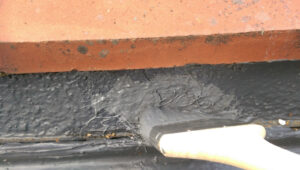Fibreglass For Roofs
Fibreglass For Roofs: is it a good choice of roofing material? Fibreglass is a popular choice for roofing material due to its durability, affordability, and lightweight nature. Here are some of its advantages and disadvantages:

Advantages:
- Durability: Fibreglass roofs are resistant to weathering, corrosion, and UV radiation, which helps to extend their lifespan.
- Low maintenance: Fibreglass roofs require very little maintenance once installed, which can save homeowners time and money in the long run.
- Lightweight: Fiberglass is one of the lightest roofing materials available, which can reduce the load on a building’s structure.
- Affordability: GRP is one of the more affordable roofing options, making it accessible to a wide range of budgets.
Disadvantages:
- Not the most energy-efficient: Fiberglass roofing has a lower insulation value compared to other roofing materials, which can lead to higher energy bills. Unless you opt for a warm roof construction using min 120 rigid insulation
- Not eco-friendly: Fiberglass is not a biodegradable material and can be harmful to the environment if not disposed of properly.
- Can be prone to cracking: Fiberglass can crack if it is not installed correctly, which can lead to leaks and other issues.

CRYLICROOF: The perfect product for fibreglass roof repairs
In summary, fiberglass can be a good choice for roofing material if cost and durability are the primary factors. However, if energy efficiency or environmental friendliness are more important considerations, there may be other roofing materials that would be a better fit. It’s always best to consult with a professional roofer to determine the best type of roofing material for your specific needs and circumstances.




